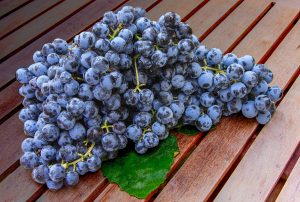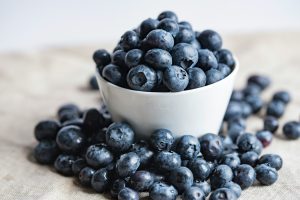But this situation is now facing a double threat: due to the already known expansion in northern Spain and along virtually the entire Atlantic coast of Portugal of Trioza erytreae, the vector insect of the ‘mildest’ African strain of HLB and due to the presence, for the first time in EU territory, of Diaphorina citri, which is the most efficient Asian psyllid carrier of the most aggressive and lethal strain for citrus fruit.
This has just been confirmed in its latest report by the European and Mediterranean Plant Protection Organization (EPPO), which indicates that the insect has been located in Cyprus, and also confirmed by the benchmark European laboratory, specifically in the region of Asómatos (district of Limassol). A discovery that added to the detection of this same vector, confirmed in January, 2022 in Israel, which would ratify its capacity for expanding around the Mediterranean.
As it is a quarantine-regulated insect, carrier of a disease the prevention, fight and detection of which is typified as ‘priority’, immediate eradication steps must be adopted in Cyprus. The Interprofesional Citrícola Española (Intercitrus, the Spanish Citrus Fruit Interprofessional Association) is demanding that the European Commission (EC) ensures the level of fulfilment and, given the seriousness of the case, it is requesting that an investigation be opened regarding the origin of the outbreak (that has not been detailed by the EPPO), supervising and financially collaborating in the performance of these actions.
“The presence in our country of one or, even worse, the increasing risk of having two carriers of HLB, makes us imagine that the arrival of this most-feared bacteria, against which there is no cure and that has been capable of reducing citrus growing in Florida to virtually nothing and reducing the production in Brazil categorically, could be just a question of time,” points out the Chairwoman of Intercitrus, Inmaculada Sanfeliu.
The interprofessional association demands the regional authorities of areas with citrus fruit production, the Spanish Government and the EC to contribute to “immediately” strengthening the prevention steps and the research lines open for the biological fight against these vectors, against which there are no effective insecticides authorised in the EU, to obtain rootstock or varieties resistant or tolerant to the disease, as well as controls in the fields for its early detection, in addition to those set up at the borders to prevent entry of the disease.
The interprofessional association, given the global benefit for vegetable health of the European fruit and vegetable production, is demanding that the EC study the possibility of following the example of other western powers, such as the USA, Australia or Japan, and to introduce a requirement to oversee the introduction of vegetable matter in the luggage of passengers entering the EU.
This would be a key step to prevent the entry of HLB or of its vectors to the European citrus growing industry, because for them it is essential to control the fact that there is no host vegetable matter being carried by commercial traffic or by the movement of people. This step, added to the restrictions and controls already in force, on the other hand, would be coherent with the milestone that passing the cold treatment of oranges to prevent false codling moth meant (which these countries now apply to all citrus fruit species.)
Diaphorina citri is the most important, most prolific vector contributing to the spread of this Asian species of the bacteria Candidatus Liberibacter asiaticus, the most destructive strain: once infected, the trees inevitably die over a maximum period of eight years, depending on the age and conditions of the crop. It can also transmit Candidatus Liberibacter africanus and Candidatus Liberibacter americanus and in areas where these three bacteria co-exist, it can transmit them indiscriminately.
Unlike the African psyllid (T. erytreae), which causes direct damage to the trees (the nymphs feed on the sap of the rutaceae trees and cause eye-catching leaf deformations), D. citri is not, per se, a harmful pest, but this makes it more ‘stealthy’, and more complicated to detect.
A study by the Valencian Institute of Agricultural Research (IVIA), Jaume I University, and the University of Florida, has accredited that the rootstock used for the immense majority of oranges and mandarins in Spain, the Citrange carrizo “is an extremely favourable host for the development and reproduction” of this psyllid.
In fact, the vector originating in Asia is the one that is responsible for the expansion of the disease in two of the main, most advanced production areas in the world: Brazil and the United States. The strategy followed in the first case, based on constant renewal, grubbing out the infected trees when not abandoning them and extending new plantations, but above all, the ‘pounding’ of the farms with plant protection treatments against the psyllid, was relatively successful for decades and allowed the Brazilian industry to become consolidated as the first exporter of orange juice in the world, but the formula now seems to have become exhausted.
Now, after six years running of increased incidence, the disease in the entire citrus fruit belt of São Paulo and South west of Minas is present in 38% of the trees and the reason for this evolution lies in the lack of control of the D. citri population, which has become resistant to the most effective insecticides used to date. In Florida, on the other hand, the presence of HLB was confirmed in 2005, but the disease must have become established years before: in the 1997/98 campaign, it reached its production record with 12.3 million tonnes; at present this figure has been reduced to 740,534 tonnes, the lowest figure since 1930.
“In the case of HLB reaching Spain, it could be difficult to contain the disease and it is virtually certain that the bacteria would end up in our sector in the medium term,” Sanfeliu warns. Extrapolating the evolution figures seen in Florida, 7.5 years on from its possible entry, the production of oranges, mandarins and lemons would be reduced to half (from 7 million tonnes to 3.6) and in 15 years, citrus fruit growing would become a residual crop.
The smallholder structure and the stricter European regulations on the subject of the environment and plant protection products that ban the pyrethroids and neonicotinoids used against D.citri would mean a smaller margin for reaction in Spain than in Brazil or Florida. “We must gain time to find solutions to fight against the disease,” the chairwoman of Intercitrus concludes.




















